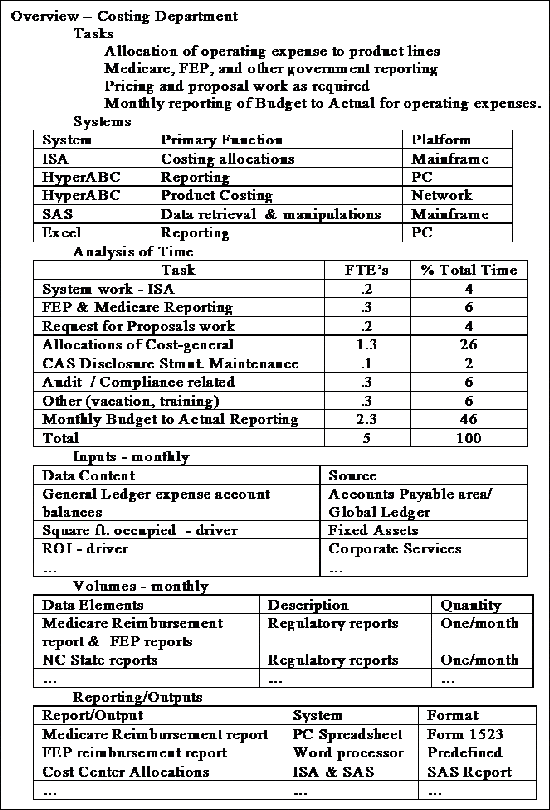July 1997
Situation ...
To enable management to react more effectively to competition and market forces, a large health insurance provider and claims processor needed to make significant changes in their financial organization. Specifically, this client needed to:
- improve the internal credibility of financial data,
- provide quicker financial analysis on product lines and market segment performance,
- produce reliable and timely ad hoc reports to marketing, operations, health networks, and executive management, and
- improve the access to information throughout the organization while improving the overall efficiency within the financial organization.
Problem ...
The financial organization had historically been focused on regulatory reporting and closing the books, leaving little time to provide useful and timely management information. Systems and processes had developed to address specific informational needs as they arose. Over time, this approach resulted in a lack of overall coordination within the financial area, redundant processes, inconsistent data definitions, non-interfaced systems, and over-dependencies on the Information Systems group.
Solution ...
Provide a concise, readable report that could document the processes – whether manual or systematic – applied to the information. The report included those items shown in the excerpt, as well as key problems and opportunities by area.
The report also identified gaps in the current processes, such as:
- Unmet information needs of end users.
- Duplicate handling of information.
- Inconsistent classification and interpretation of information.
- Technology weaknesses that impeded improved efficiencies and quality.
- Personnel weaknesses or skill gaps.

An excerpt from the report is shown above. For each functional area, the report included:
- Overview of functional area's main purpose
- Number and skill level of employees
- Analysis of employees' time
- Information inflows
- Systems and manual processes
- Volume of data and processing frequency
- Outputs and users of the outputs
- Skills levels needed to accomplish tasks and skill levels being used
The report also included:
- Executive Summary
- Supporting Flowcharts
- Interview summaries from auxiliary areas
- Recommendations
Results & Benefits ...
This engagement provided the client with:
- A consice, consistent presentation of all of the key information needs of the organization, and the current inputs, processes, and outputs of information within Finance.
- An analysis of the skills available in each area and appropriateness to functions performed.
- A tool to illustrate all the divergent systems and manual processes in place.
- A tool to develop specific plans and priorities to improve information quality and delivery, enhancing the credibility of the financial information and the department.
Conclusion ...
The Finance Information Strategy Report, the output of this engagement, provided the client with a tool for the finance organization to plan their course of action and to educate software vendors on requirements and process improvement areas.





